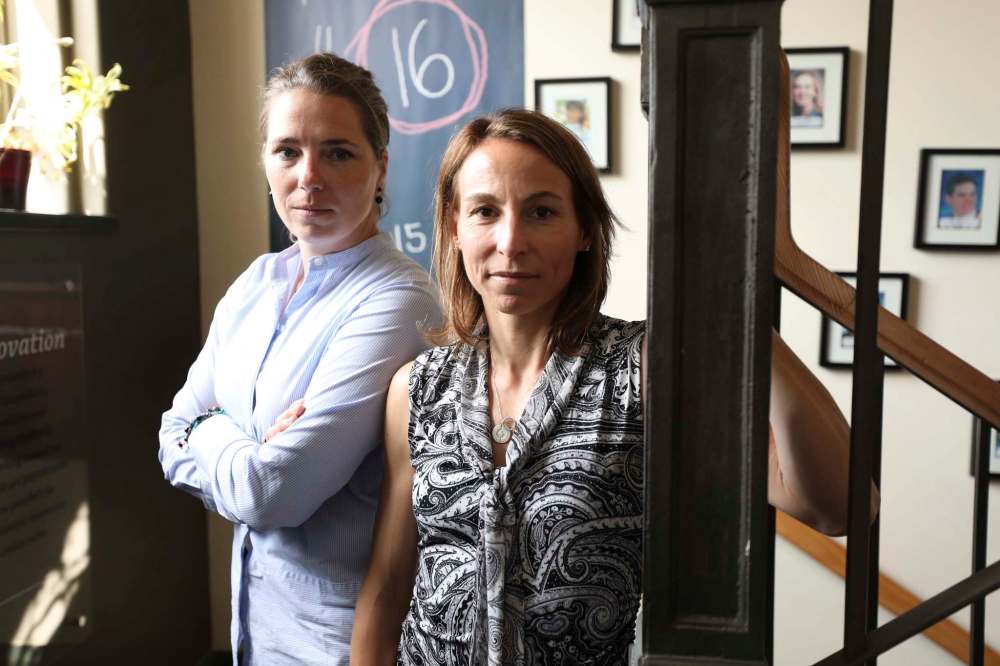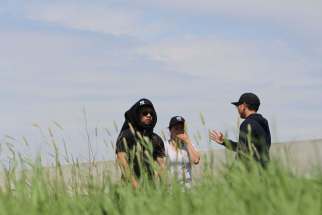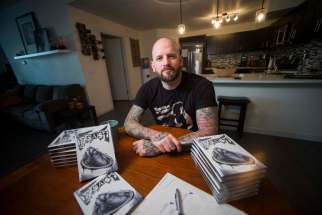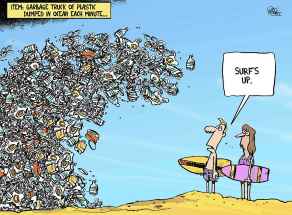Speaking out to protect athletes from abuse Former national team skiiers go public following sexual-assault conviction of former coach
Read this article for free:
or
Already have an account? Log in here »
To continue reading, please subscribe:
Monthly Digital Subscription
$0 for the first 4 weeks*
- Enjoy unlimited reading on winnipegfreepress.com
- Read the E-Edition, our digital replica newspaper
- Access News Break, our award-winning app
- Play interactive puzzles
*No charge for 4 weeks then price increases to the regular rate of $19.00 plus GST every four weeks. Offer available to new and qualified returning subscribers only. Cancel any time.
Monthly Digital Subscription
$4.75/week*
- Enjoy unlimited reading on winnipegfreepress.com
- Read the E-Edition, our digital replica newspaper
- Access News Break, our award-winning app
- Play interactive puzzles
*Billed as $19 plus GST every four weeks. Cancel any time.
To continue reading, please subscribe:
Add Free Press access to your Brandon Sun subscription for only an additional
$1 for the first 4 weeks*
*Your next subscription payment will increase by $1.00 and you will be charged $16.99 plus GST for four weeks. After four weeks, your payment will increase to $23.99 plus GST every four weeks.
Read unlimited articles for free today:
or
Already have an account? Log in here »
Hey there, time traveller!
This article was published 07/06/2018 (2740 days ago), so information in it may no longer be current.
There’s no reason to print the abuser’s name now, Geneviève Simard says. He had his chance to be named: first on the slopes, where he once served as Canada’s national ski team coach, and later in a Quebec court.
It was there, last summer, he was convicted of 37 counts of sexual assault — all against athletes once in his care. A dozen victims have come forward, over the years; in December, he was sentenced to 12 years in prison.
So he had his time to be named, and that’s what he chose to do with it. As for what to call him now?

“The jerk,” Simard says, with a brusque wave of her hand. That’ll do.
Besides, it is Simard’s time to be named, now, and Amélie-Frédérique Gagnon’s, too, and also for six other victims: Gail Kelly, Anna Prchal, Émilie Cousineau, Katie Bertram, Allison Forsyth and Gillian McFetridge.
Over the last week, the eight women successfully petitioned to have the publication ban on their names lifted. Now, they are free to speak, and be seen — and they hope a nation, and the whole sports world, will listen.
“It’s been a roller-coaster of emotions,” Gagnon said Thursday in Winnipeg. “I’m pretty proud of what we’ve done, and coming out is a relief. It helps us moving forward, in just the fact that we can do something good out of this.”
The last week has been a whirlwind, Simard says, as she and Gagnon settle into a bright office at the Canadian Centre for Child Protection. There was a press conference in Montreal, a flurry of press in Toronto and Winnipeg.
By now, says Simard — a two-time Winter Olympian — she’s running mostly on adrenaline. It hasn’t been easy to talk about her abuse, again and again; even though it occurred two decades ago, it brings the pain rushing back.
On the other hand, there is the love, the care, the messages of support flooding in. There was the moment, when they made their public debut in Montreal, when the journalists assembled stood and applauded.
That makes it worth it. So does this: they are on a mission to make sport safer for this generation of athletes.
“It happened to me,” Simard says. “We’re going to tell our story, and we want to make something good happen.”
To tell that story, they must go back to the 1990s, when they were talented teen skiiers rising through the ranks of international competition. By age 15, they were travelling most of the winter, spending months away from home.
Abuse in sport can occur at all levels. In some ways, young high-performance athletes are especially vulnerable. They are, like Simard and Gagnon, often required to be separated from parents and other non-sporting supports.
Most dangerous of all, perhaps, is they’ve often been funnelled into a position where the path to their dreams runs through one coach, one program, one team. So what happens, when that is the same thing that hurts them?

Today, Simard remembers a national team program that was dysfunctional, toxic, and outright abusive. Athletes were isolated from each other, and pushed to tears by a coach who controlled what they ate and who they dated.
Then, it got worse. The things he did to some of them got much worse. That’s why he is now in prison.
They were young, and disconnected from home. They didn’t know where to turn for a neutral observer, someone to tell them if any of this was normal. And they were still trying to reach the height of their sport.
“I didn’t tell anyone for so long,” Simard says. “First, I was scared I would get kicked off the team, and I wouldn’t get to the end of my dreams. I felt like people wouldn’t believe me. You live with this guilt, and you internalize it.”
Nor did they get much sign of support within Alpine Canada.
Gagnon was one of the ex-coach’s earliest known victims; at the time, she says, an assistant coach knew she was being abused but did nothing to stop it.
If that assistant had acted, maybe the ex-coach wouldn’t have had the chance to abuse 11 other young women.
This is a familiar story in institutional abuse cases. There are, almost always, enablers: people who know, or at least suspect, but are part of an organization more invested in protecting its leaders and image than its victims.
Simard remembers the message she got when she once tried to speak up: “Think of our sponsors,” she recalls hearing. The suggestion she received then was her young career would be derailed if she rocked the boat.
“It was already derailed, because of this predator,” she says. “But I felt like I would never get to my dreams.”
Some of that pressure was finally lifted in 1998, when the abuser was fired from the national program.
By then, Gagnon had already lost her dreams; the abuse she suffered stole those from her, she says. She quit after two years on the national team. Today, she works as a full-time mother of two children, aged 13 and 11.

Simard, 37, retired from skiing in 2010, after competing in four world championships and two Olympics. Today, she works as a bush helicopter pilot, and has starred in a Quebec docu-series about the adventuresome work.
Now, she is on a new mission: to take the lessons learned from her youth, and use them to help others.
As they travel across Canada, Simard and Gagnon — and the other six women who have now gone public — are pushing for sports organizations to enact a comprehensive safety plan designed to protect athletes in their care.
That plan, developed by several sport and anti-abuse groups, calls for sport organizations to meet clear standards in three areas: educating staff and athletes, instituting effective policies and procedures, and ensuring compliance.
Those standards include such things as the rule of twos — two adults must be present at all times with young athletes — and hiring an independent safety officer, as well as a selection of mandatory training and education.
Simard says she’d like to see Ottawa make sport funding contingent on organizations implementing the plan.
Had Alpine Canada had those policies in place in the 1990s, Simard and Gagnon say, the abuse may not have been able to continue. They might have known where to turn, and felt safe reporting what was happening to them.
“In the healing process of this, if we could put something in place to prevent what happened to us from ever happening again, then it’s all worth it,” Simard says.
melissa.martin@freepress.mb.ca
Our newsroom depends on a growing audience of readers to power our journalism. If you are not a paid reader, please consider becoming a subscriber.
Our newsroom depends on its audience of readers to power our journalism. Thank you for your support.









